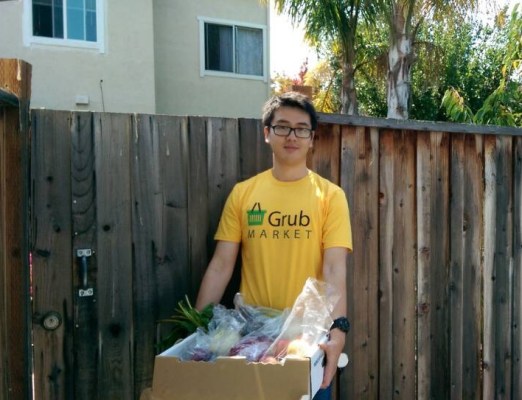If you love farmers market produce but hate going to the farmers market, then GrubMarket is a thing you should check out. Its marketplace connects consumers with locally sourced and organic food from nearby farms and producers in a number of cities around the country.
GrubMarket hopes to take advantage of a couple of larger trends that are happening among consumers. First, a growing number of consumers have become more conscious of where their food comes from, and are trying to support local producers. The second big trend is consumer laziness, and a general desire to have all things delivered to them.
To capitalize on those trends, GrubMarket offers up a marketplace through which consumers can buy food from local farms and producers. Once they’ve chosen from various different options, GrubMarket does the work of picking up those products from local producers and delivering them to consumers.
Farms benefit from a more direct connection with consumers, which generally enables them to make more money from products than if sold through third-party distributors. And since GrubMarket does all the pickup and delivery, they don’t even have to worry about the cost of transporting their goods.
According to a recent study, only 16 cents out of every dollar spent on food end up going to the farms that produce it. The other 84 cents pay for transportation, storage, and processing of foods. By contrast, GrubMarket takes a small portion of sales, which means better margins for the producer.
With GrubMarket, consumers are able to support local food producers without the inconvenience of going to a farmers market. They’re also generally able to get fresher and healthier foods than if they bought them at a nearby grocery store or another distributor.
If that all sounds familiar, it’s probably because GrubMarket isn’t the only player providing a direct-to-consumer marketplace of locally sourced produce and other goods. We’ve also written a bunch about Good Eggs, which has a similar model of delivering fresh and organic foods to consumers.
But there are some significant differences in how they work. Unlike Good Eggs, which operates a large warehouse and processing center in each of the markets it operates, GrubMarket has little on-the-ground operations costs. Instead of having food producers drop off their goods to one central location where it sorts and bags customer orders before sending out deliveries, GrubMarket goes to them to pick up orders.
By doing so, GrubMarket believes it can more efficiently route pickups and deliveries, while saving on the overhead that comes with having a local distribution to store and sort goods. Considering Goods Eggs recently laid off 15 percent of staff after raising $30 million, having a model that doesn’t require a warehouse or employees to sort goods from a distribution center seems like a good bet for GrubMarket.
The tradeoff for the company is that it might not be able to deliver a certain good the day after a consumer orders it. According to GrubMarket founder Mike Xu, the typical wait time for goods is generally one-to-three days, which varies depending on where a food producer is located and whether or not the company will be picking up from other nearby farms or producers. That gives it the flexibility to make the most efficient use out of its delivery vehicles.
Wait time also depends on the processing time of local food producers, Xu told me. Since GrubMarket doesn’t store the food, it waits for providers to tell it when it’s ready to pick up. Anyway, GrubMarket deliveries might not be guaranteed for the next day, but they are free for a customer’s first order and any order over $25.
The way GrubMarket operates its deliveries means lower overhead, but it also means the company is able to more quickly expand into new markets. While other local delivery services have the big upfront cost associated with building distribution centers and warehouses, GrubMarket can get up and running once it hires a few drivers and onboards local food producers.
That’s enabled it to open up in several markets beyond the San Francisco Bay Area, where it was founded. GrubMarket is now available in Chicago, Los Angeles, Portland, San Diego, Sacramento, and Detroit. Xu says the company can deliver up to 10,000 pounds of local food daily in those markets, but I’m having a hard time picturing how much food that actually is.
To keep growing, the company has raised $2.1 million in seed funding from investors that include GGV Capital, Jerry Yang, Y Combinator, Wang Gang, and New Gen Partners, among others.
While GGV Capital’s managing partner Hans Tung admitted that GrubMarket faces competition in the food delivery space — not just from Good Eggs but from the likes of Instacart and others — he believes that the company can differentiate itself from the pack due to its focus on local organic food producers.
Tung also said the company’s cost-efficient model for deliveries sets it apart from other on-demand offerings. And in one final piece of praise, Tung compared Xu and GrubMarket to Wish, the fast-growing shopping marketplace that is on its way to a $1 billion valuation.
Will GrubMarket grow that quickly? It’s unclear, but at least it has a cost-efficient model for doing so.
